Kinkaku-ji, the Golden Pavilion Temple is an iconic site in the heritage city and should be on your list of things to do in Kyoto. Here’s what you need to know to plan your visit.
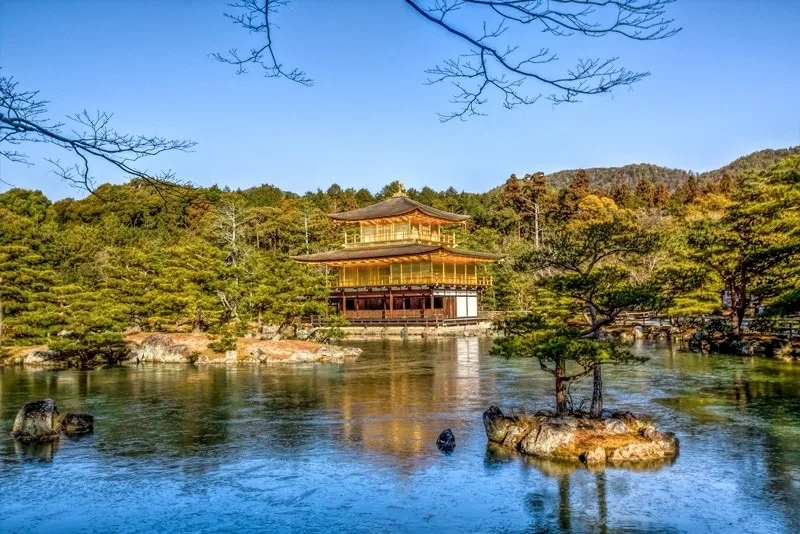
We’ve been to the Golden Pavilion at Kinkaku-ji temple during springtime and in winter and thoroughly enjoyed both visits. It’s another location on our ‘must do’ list of in Kyoto city.
The temple itself is a stunning and iconic sight with its gleaming gold leaf reflected back in the mirror pond. The temple garden is a traditional design and has remained consistent for centuries, for garden lovers and those with an interest in the Japanese arts it’s well worth a visit too.
Further Reading | Our top 15 of the 1600+ temples in Kyoto
Like many Japanese temples, it goes by several names which can be confusing. It’s generally referred to as the golden pavilion in English. In Japanese that translates as Kinkaku-ji which is what it is usually identified as on tourist maps. The official name though is Rokuon-ji which literally means the deer garden temple although we’ve not seen deer in the garden here, Miyajima or Nara are good spots if you specifically want to see that.
Table of Contents
The History of the Golden Pavilion Temple
The site has a very long history. During the 1220s (the Kamakura period) a powerful statesman named Kintsune Saionji built his villa there. Its history as a temple began in 1397 when it was purchased by the Shogun Yoshimitsu Ashikaga to be his retirement villa. On Ashikaga’s death, in accordance with his wishes, his son converted it to a Zen Buddhist temple.
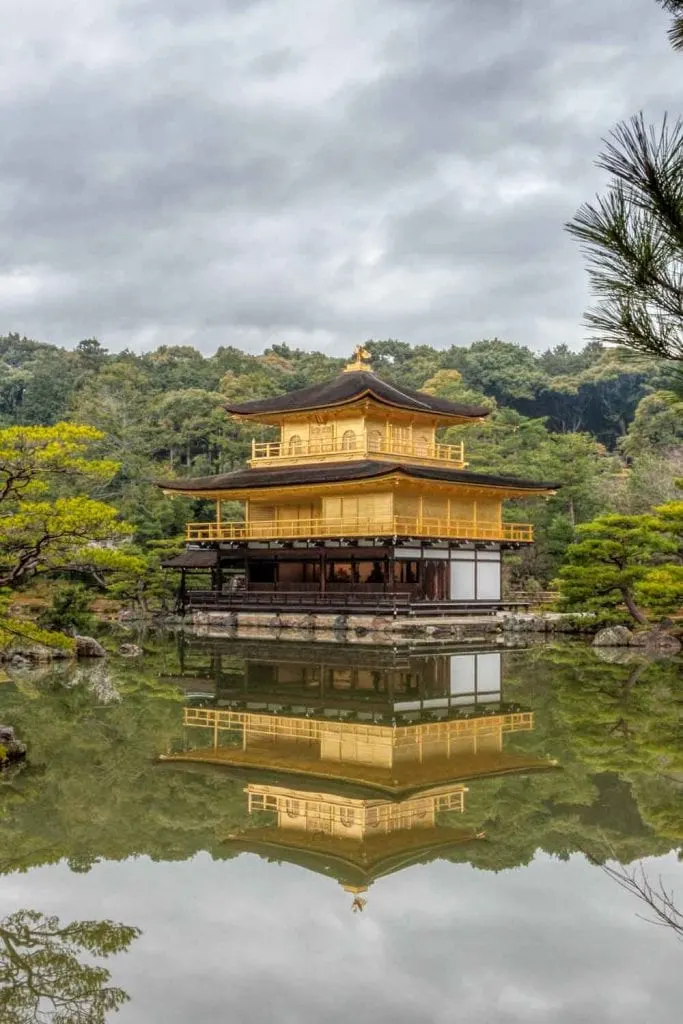
The Golden Pavilion is just one of the major buildings within the temple complex. It was fortunate to escape fire during the Onin War (1467-1477) when the rest of the original buildings in the complex were destroyed. It wasn’t so fortunate in 1950 when a novice monk set it on fire destroying the building and an original statue of Ashikaga Yoshimitsu. It was only the fast action by other monks that saved many of the other treasures inside. It was a tragedy on many levels as the young monk was suffering from schizophrenia and attempted to take his own life that same night.
In 1955 the pavilion was rebuilt in its original position and style although there is still some debate on whether the original gold leaf work was quite as extensive as it is now.
The design of Kinkaku-ji
The structure of the golden pavilion brings together 3 architectural styles in harmony, one on each of the three tiers. You can’t enter the pavilion but you can see some of the icons in the bottom level through the open shutters. It’s built on the edge of Kyoko-chi (the mirror pond) and from many angles appears to float on the pond. In the right light the temple has a perfect mirror reflection in the lake. We saw this on our spring visit but in winter the ice floating in the pond broke up the reflection.
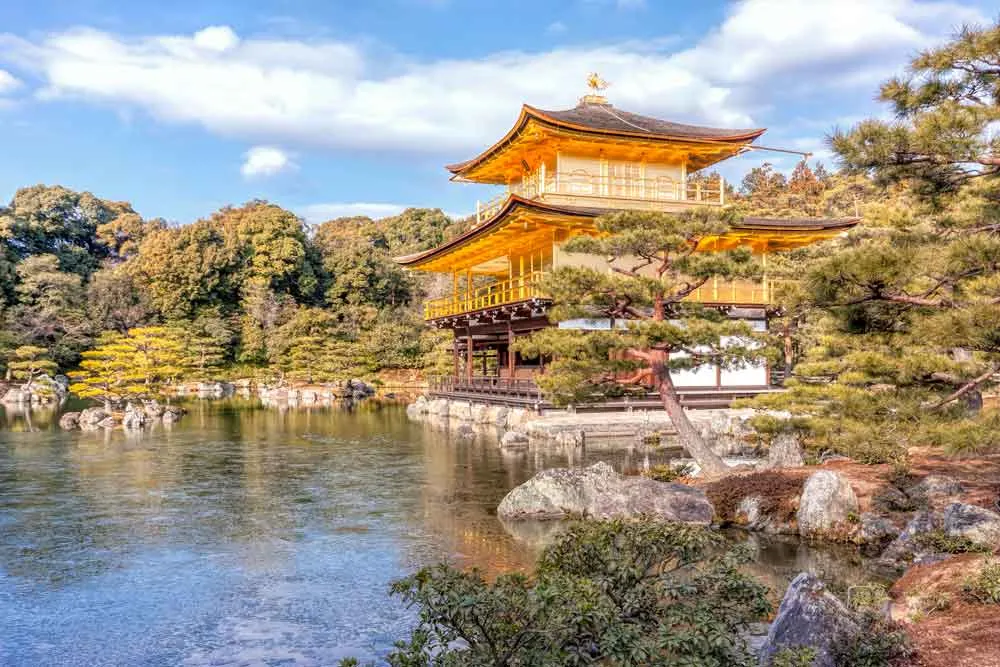
Shinden-zukuri style
The bottom story is called the chamber of dharma waters (Ho-sui-in) based on a style common with the aristocracy in Kyoto during the Heian period. It’s a single large room with partially shuttered windows that allow air and light inside. The room is surrounded by an open verandah. From a distance, you can see some of the relics through the shutters including a wooden statue of the Buddha and the restored statue of Ashikaga.
Buke-zukuri style
The second story called the tower of sound waves (Cho-on-do) is based on the style of samurai residences and functions as a Buddha hall. The sacred icon in this space is a statue of the Boddhisatva Kannon, the Goddess of mercy. This level is fully lacquered in gold leaf.
Karayo style
The top level is in the Zen temple style and is called cupola of the ultimate (Kukkyo-cho). This level houses an Amida Buddha triad and 25 Boddhisatvas. It is clad in gold leaf and topped with a thatched roof. On top of the roof a phoenix perches in the Chinese style.
Other features of the temple buildings and grounds
Hojo Hall
After viewing the golden pavilion across the pond we passed the Hojo on the left, this is the head priest’s former living quarters and features a meditation platform overlooking a beautifully kept sand garden that prior to the crowds that now visit, would have been a very serene spot for morning contemplation.
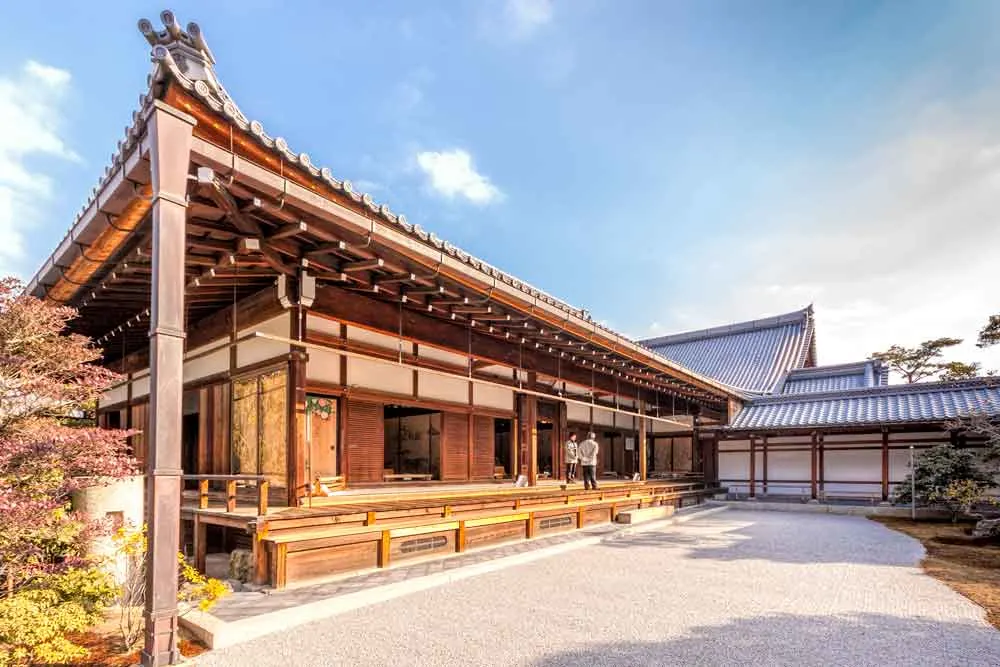
A 600-year-old pine tree
We were really taken with this 600-year-old pine tree on our first visit when it was undergoing routine maintenance and we learned its significance.
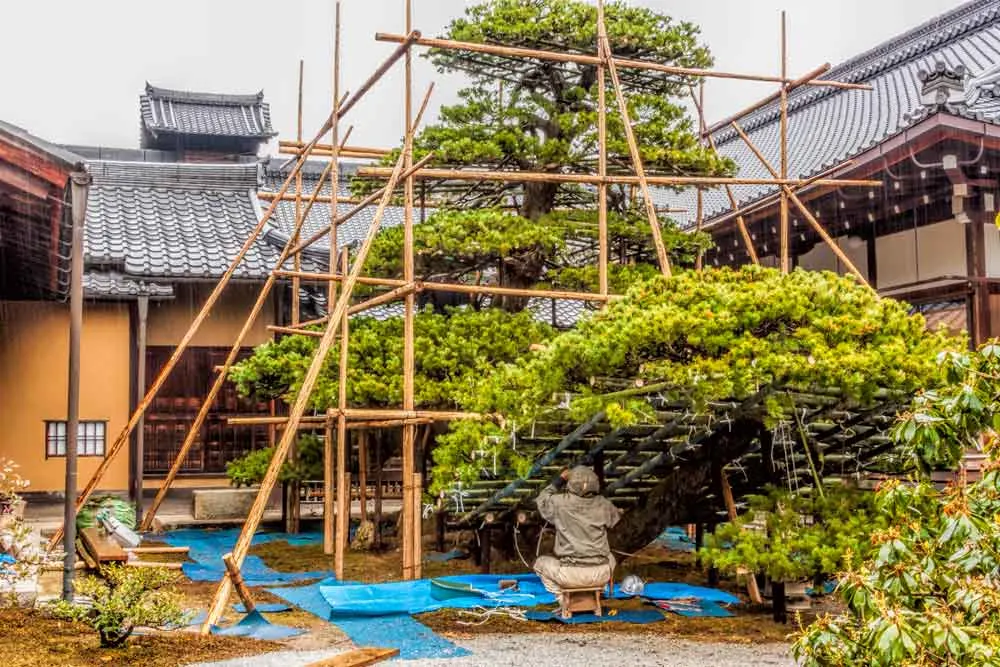
The tree was a favourite of Yoshimitsu (the retired Shogun) back in the 14th century and it takes a tremendous amount of skill and continual maintenance over the centuries to create a dwarf pine with a complex cantilevered structure like this.
Anyone with an interest in bonsai techniques is going to be impressed and on our first visit, we were fortunate to see a craftsman working on it. The scaffold is only there while the work is undertaken and isn’t a support for the tree, on our other visits it hasn’t been there.
White Snake Pagoda and the Toryumon dragon waterfall
Continue to follow the path around the golden pavilion and up a few steps you will see the ‘Shirohebi no Tsuka’ pagoda on an island in the Anmintaku Pond. Its name means the mound of the white snake. I’d heard a few stories about this pagoda but I believe it is there because the legendary white snake was a protective talisman of a family who previously owned the land.
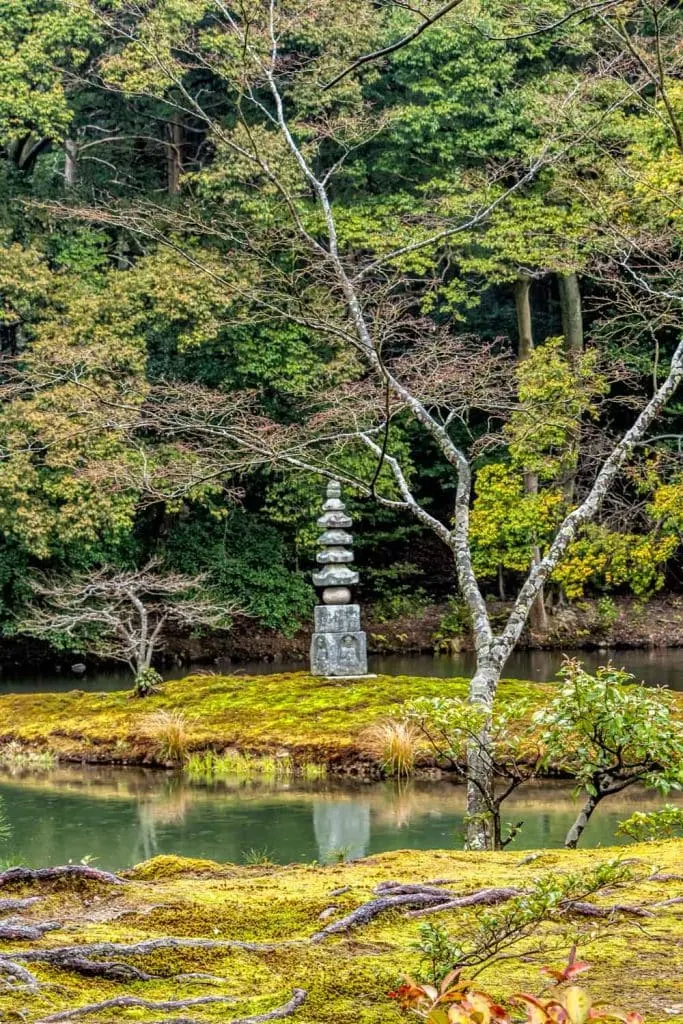
The lovely Toryumon or dragon waterfall does have a story behind it though. It’s based on a legend that any fish that can swim up a waterfall will turn into a dragon, a proverb that I take to mean something along the lines that the greatest effort will bring the greatest rewards.

The boulder symbolises the carp, the only fish at the time believed to swim up a waterfall. The waterfall may also be a tribute to Yoshimitsu, for his success and becoming the dragon (shogun).
Sekkatei Tea Room
As you continue through the gardens you come to the original tea hut which was added during the Edo period and designed by tea master Kanamori Sowa (1584-1657) but the current hut dates to 1874 when it was rebuilt.
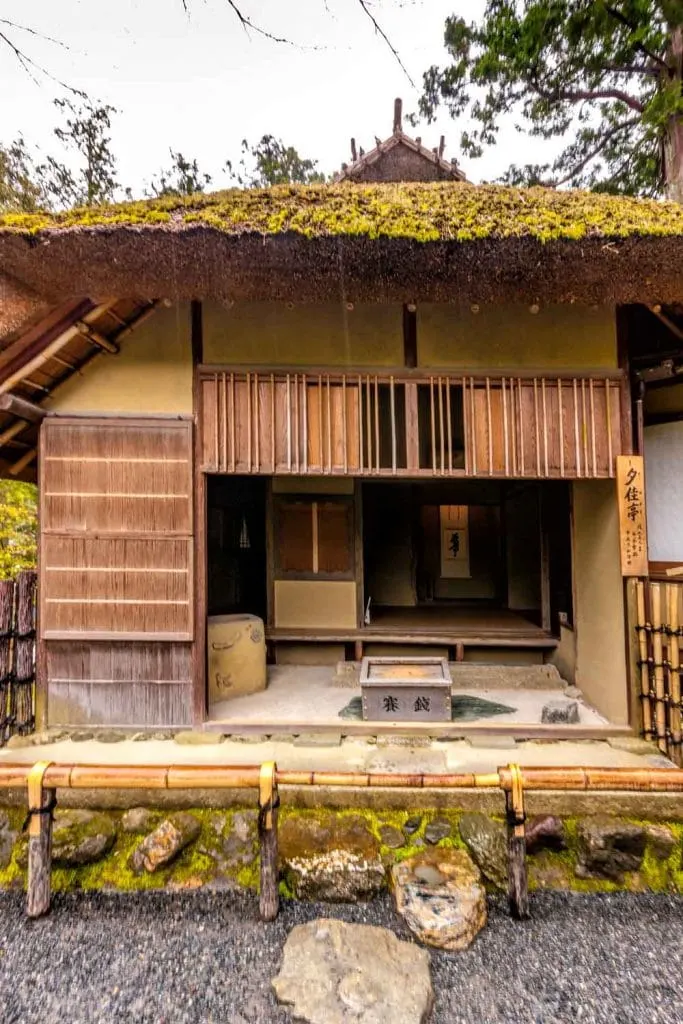
The dominant feature is the very thick thatched roof. Between a badly timed shower of rain and the position of the sun I didn’t end up with a good photo but it is a gorgeous building.
The Fudo Hall
You then come to the Fudo Hall. This building houses a statue of Fudo Myoo (Acala in Sanscrit) who was one of the 5 wisdom kings and protectors of Buddhism. His statue at Kinkaku-ji is said to have been carved by Kobo Daishi.
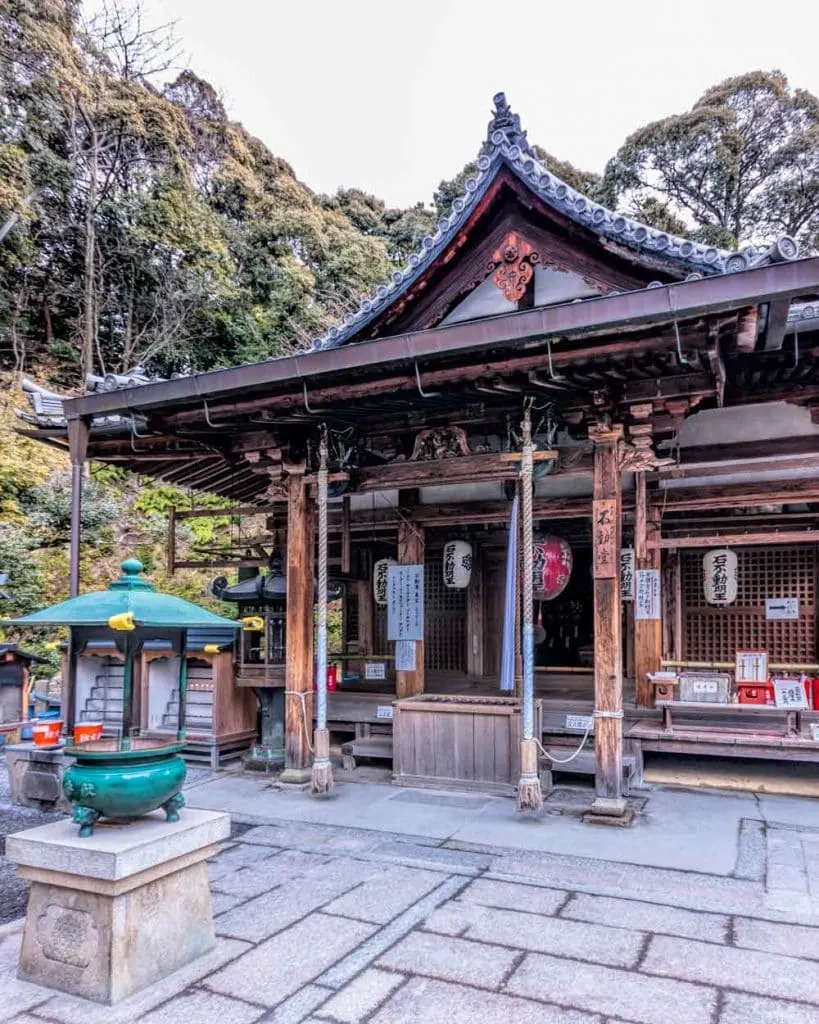
Kobo Daishi was a Buddhist monk, scholar and artist in Japan known as Kūkai during his lifetime. He founded the Esoteric Shingon School of Buddhism and you will see his name come up all over Japan as you travel around including Mt Misen on Miyajima Island and the caves at Hasedera temple in Kamakura.
After the hall as you continue on towards the exit. There is a souvenir shop and public tearooms with lovely outdoor tables and red umbrellas where you could have matcha tea and sweets for Y500.
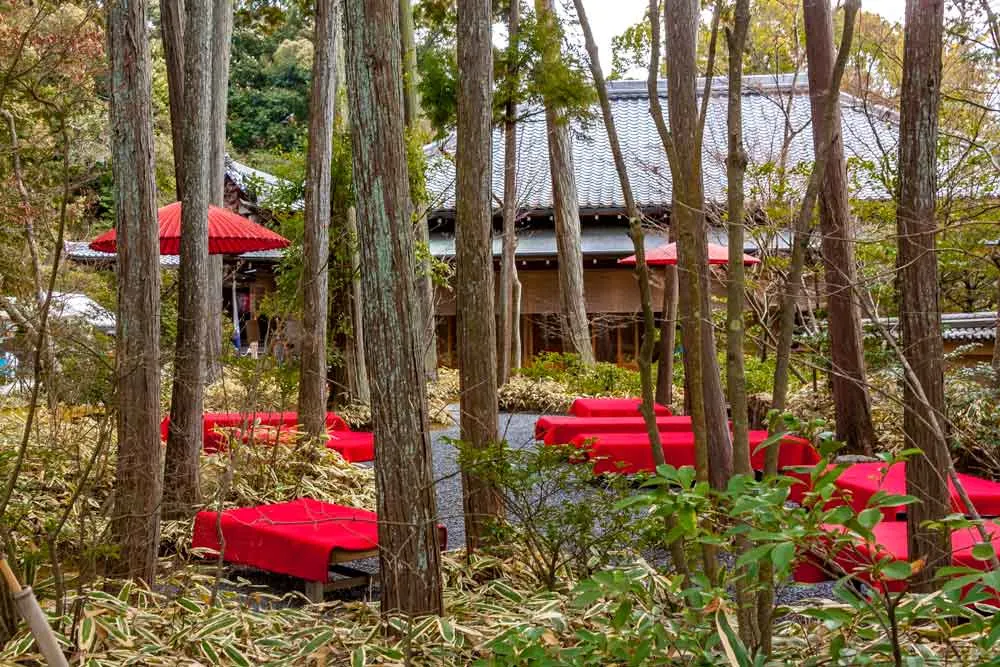
Are you a tea drinker or have an interest in Japanese culture? We also have articles on the site about enjoying a tea ceremony in Japan and our favourite Japanese teas.
Golden Pavilion Temple Visitor Information
Getting to Kinkaku-ji temple
The north of Kyoto isn’t a particularly convenient location to get to unfortunately with most accommodations based either centrally or near the station. It’s not difficult though, just a little more time-consuming than you would probably expect for the distance, it’s only 9 km from the station.
I would suggest using the bus to get here even though it’s almost never my preferred transport in Japan. There are two options, you can catch the Raku 205 west bus at stop B3 from Kyoto station, or any other stops on its route which will take 35 – 40 minutes.
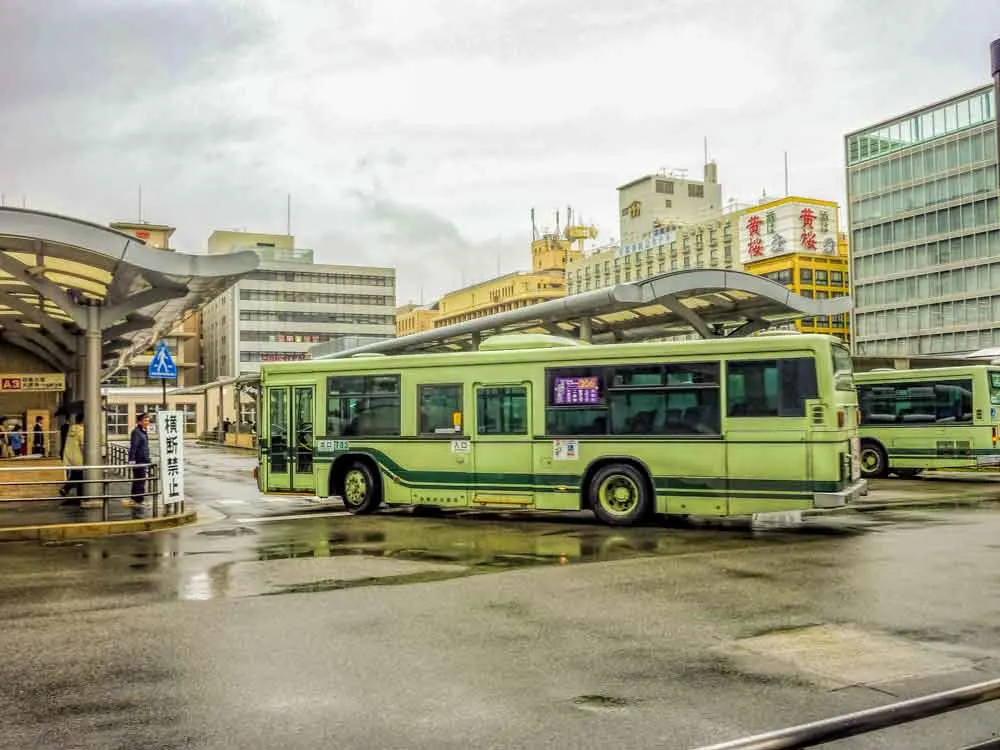
The Raku 205 is also a good choice for Nijo Castle and other sites in north Kyoto like Ryoan-Ji if you want to combine your visit with other things nearby.
Another alternative is the 101 local bus which you board from stop B2 at Kyoto station. This is a tourist route bus so it’s usually slightly less crowded during peak times than the local buses because if follows a less convenient route for business and local transit.
It also has announcements in English which can help you get your bearings along the way and ensures you find the right stop to get off. Either option takes around 35-40 minutes to the Kinkaku-ji stop but the tourist buses are less frequent.
Entry fees and facilities
A small entry fee of Y400 is charged for entry. You will be given an attractive scripted entrance ticket and a brochure that includes a map of the grounds and some history of the temple in English.
Onsite there is a gift shop, toilet facilities and a public tearoom. If you are completing a Goshiun chou (temple stamp book) you can get it stamped and the calligraphy added at the gift shop.
Things to do near the Golden Pavilion Temple
While in northern Kyoto there are a few other spots you might want to stop in on.
Ryoan-ji – A zen temple with a famous and very impressive rock garden.
Kitano Tenmangu Shrine – A popular shrine that is particularly impressive during the ume and Sakura seasons. There is a special event and tea ceremony served by geisha at this temple in February.
Kamashichiken Hanamachi – One of Kyoto’s 5 geisha districts. It is the oldest and currently has around 25 geikos and maikos working across 11 tea houses. You can read more about Kyotos geisha districts in this post.
If you found this article useful please consider saving it to Pinterest. It makes it easy for you to find it again, it helps us, and it helps other travellers to find the information they are looking for.
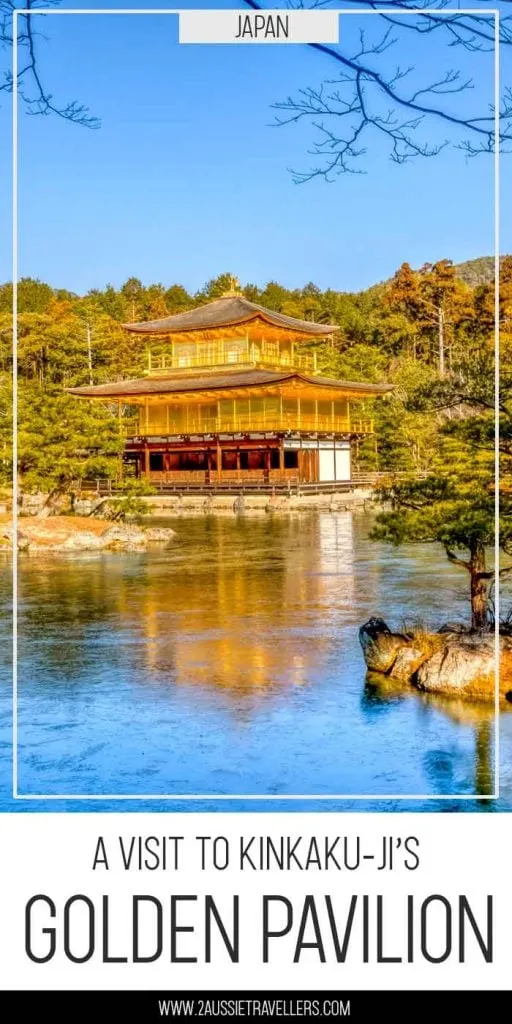
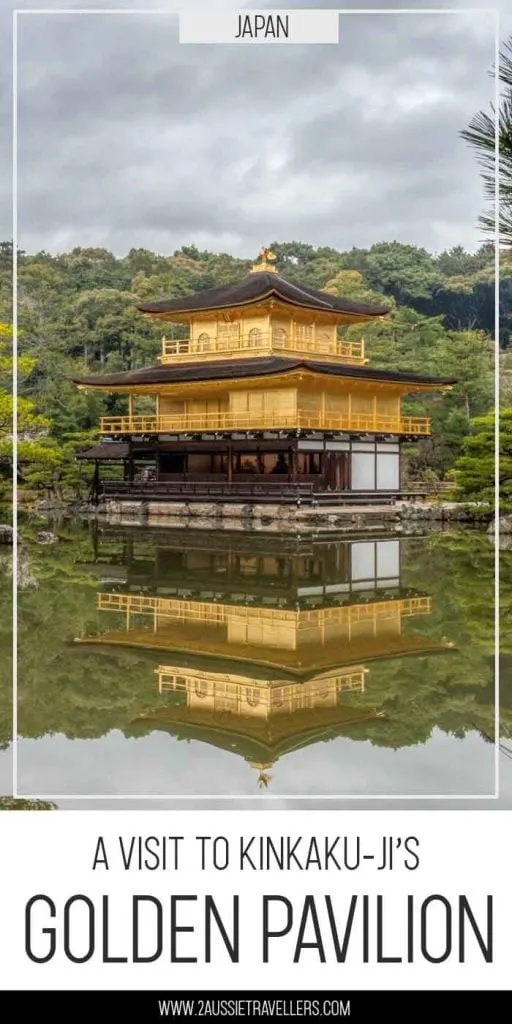
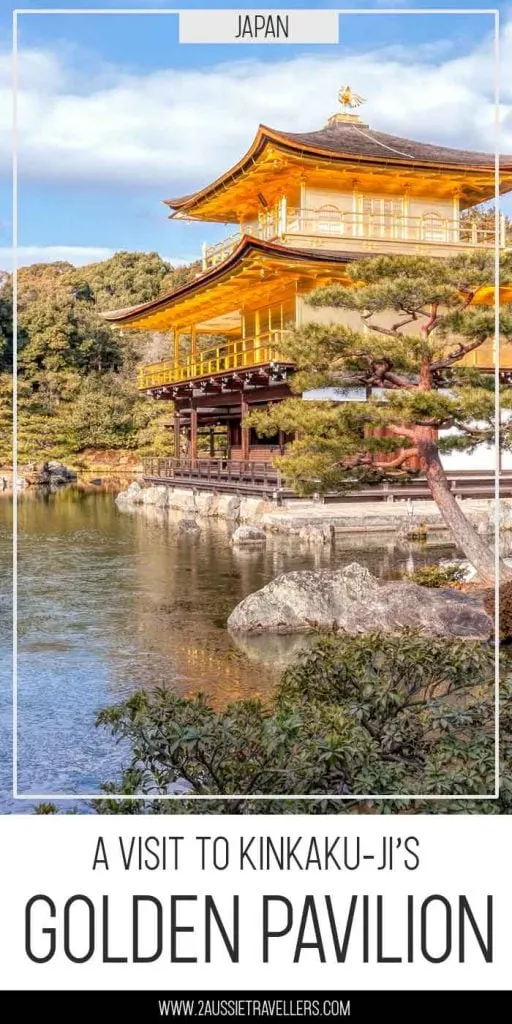
Golden Triangle Tour with khajuraho
Tuesday 5th of July 2016
Amazing temple, beauty of these temples touch my heart and it is situated in lap of nature.
Kathy Marris
Tuesday 28th of June 2016
I would like to visit Kyoto and this temple (of many names) when I return to Japan. My recent trip has me sold on Japan as a fabulous travel destination. ?
2 Aussie Travellers
Wednesday 29th of June 2016
It's a great country to visit and it looks like you got to a few places off the usual trail
Lauren Meshkin @BonVoyageLauren
Tuesday 28th of June 2016
Wow, absolutely beautiful! Thanks for sharing your lovely photos. Great post too.
mark and kate
Tuesday 28th of June 2016
Japan is in my list of places to visit. Unfortunately, I still haven't had the opportunity. Your post is very valuable for me as it gives me detailed info about the Golden Pavilion. Thanks!
janna
Monday 27th of June 2016
It's been my dream to visit Japan and this is definitely fueling my wanderlust. I love how well maintained it is. So beautiful! Great photos btw!